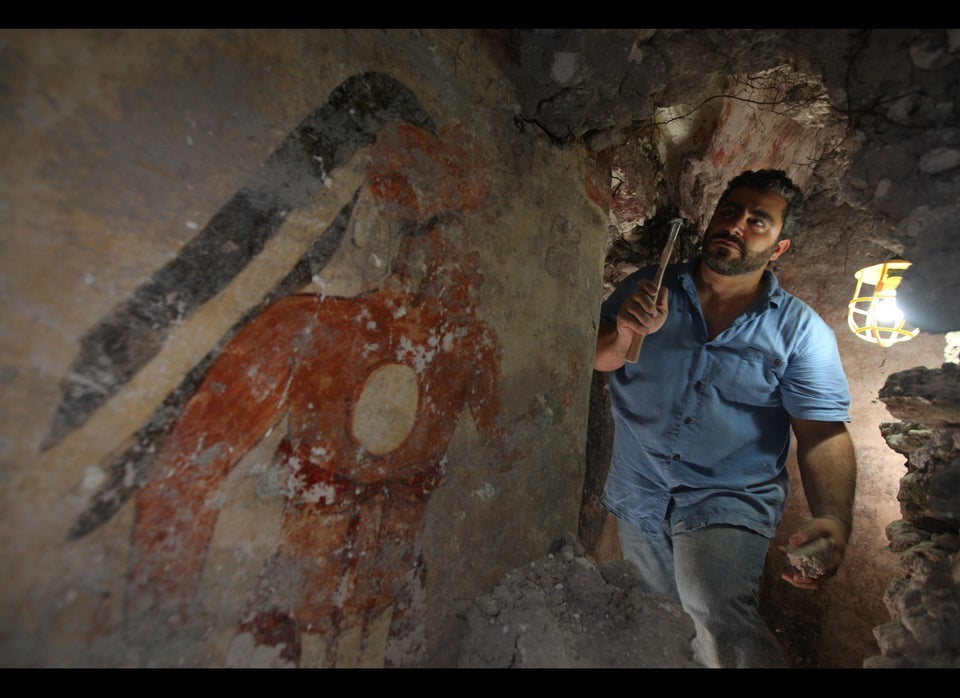"For the first time we get to see what may be actual records kept by a scribe, whose job was to be official record keeper of a Maya community. It's like an episode of TV's 'Big Bang Theory,' a geek math problem and they're painting on the wall. They seem to be using it like a blackboard."
That's Boston University archaeologist William Saturno talking about a new excavation of an ancient Mayan structure hidden in a rain forest in Guatemala's Peten region, according to a written statement released by the National Geographic Society. The society supported the excavation, which Saturno led.
The walls of the structure, believed to be a house, are adorned with unique red and black glyphs unlike those seen at other Maya sites, according to the statement.
"We've never seen anything like it," David Stuart, professor of Mesoamerican art and writing at the University of Texas-Austin, said in the statement. He deciphered the glyphs.
Some of the glyphs relate to various Mayan calendars. But guess what: there's no sign from the glyphs that the Mayans believed the world would end in 2012--only that the world would begin a new cycle.
"It's like the odometer of a car, with the Maya calendar rolling over from the 120,000s to 130,000," Anthony F. Aveni, professor of astronomy and anthropology at Colgate University, said in the statement. "The car gets a step closer to the junkyard as the numbers turn over; the Maya just start over."
The structure is part of a region called Xultun, the largest Mayan site yet to be fully investigated by archaeologists. It was first spotted in 2010, according to the statement.
The discovery of the glyphs is reported in the June issue of "National Geographic" and in the May 11 issue of the journal "Science."

